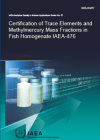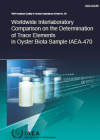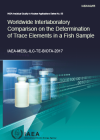Coastal and marine environments can be tremendously biodiverse. Human activities, pollution, land use and development along coastlines, however, can put stress on these environments that may limit the rates of growth and reproduction of coastal flora and fauna. This can in turn reduce overall biodiversity.
Coastal and marine biodiversity loss
Marine environments contain some of the most diverse ecosystems on the planet, even more diverse than tropical rainforests. Yet they are subject to multiple stressors that can impact their sustainability and biodiversity. The IAEA uses nuclear and isotopic tools to study marine ecosystems and offer expertise on how to counter loss of biodiversity.
Multiple stressors
Human activities have a major impact on marine environments. Pollutants released from industrial, agricultural and other such activities enter the oceans through groundwater, surface water and precipitation. Rapid urbanisation and infrastructure development in coastal areas encroach on natural habitats and modify the functioning of ecosystems, with for example changes in currents and nutrient distribution.
Biotoxins linked with harmful algal blooms have been implicated in widespread mortality of marine mammals and fish. Industrial activities release pollutants that can limit the fauna and flora’s ability to reproduce and grow. Climate change can lead to increasing sea temperatures and ocean acidification. Additionally, while some species are the subject of over-fishing, others are endangered but still end up unintentionally in the nets of commercial fishing operators, becoming so-called “incidental takes.”
There also remains uncertainty about the full impact of climate change and ocean acidification on individual species and ecosystems, as well as on economic sectors such as fisheries, tourism and the communities that depend on them. Studies on coral reefs have shown they can be particularly sensitive to temperature and chemical variations.
Ocean acidification and harmful algal blooms
Oceans take up about one fourth of the carbon dioxide generated by human activity and released into the atmosphere. Increased levels of carbon dioxide entering the oceans lead to the modification of the acidity of seawater – a phenomenon known as ocean acidification. Below a certain level of carbonate concentration, conditions become corrosive to calcium carbonate, which is used by many organisms, such as corals, molluscs and certain species of phytoplankton, to build shells and skeletons. The phenomenon has emerged as a key issue of global concern in the last fifteen years.
Another issue of concern are reported incidences of harmful algal blooms, including “red tides”, which have been increasing in recent years and are having serious effects. The toxins associated with them threaten both human and animal health through the consumption of contaminated seafood and the inhalation of aerosol toxins. They have been implicated in the deaths of hundreds of sea turtles in El Salvador and Mediterranean monk seals, killing one-third of the world population of this threatened species.
IAEA research helps counter biodiversity loss
The Agency’s environment laboratories research the sensitivity and accumulation in organisms of trace elements modulated by chemical variations in the ocean. They are able to study under artificial environmental conditions the biological responses of marine species to variations in their habitat and the effects of pollutants on individual species. This is especially useful to determine the vulnerability of high-value oceanic resources, such as coral reef habitats and important seafood species. Such research helps Member States evaluate potential biological and socio-economic impacts of changes in ecosystems and implications for sustainable food security.








